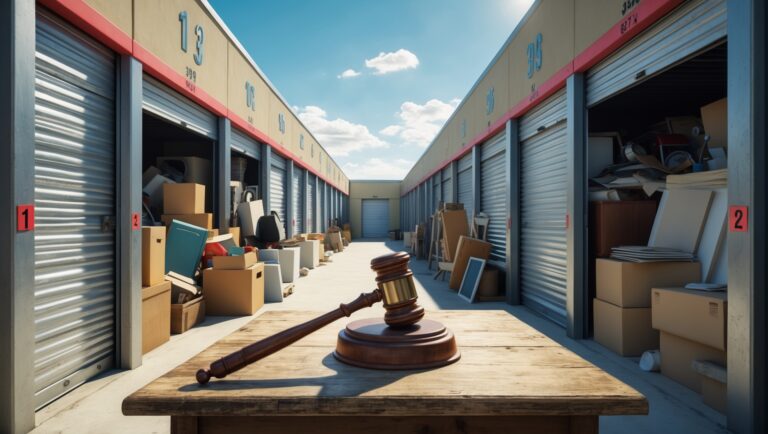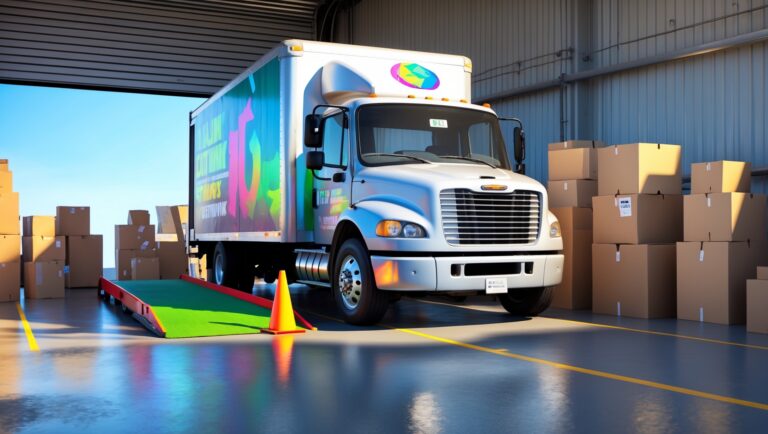Moving Container Storage: Step-by-Step Setup, Logistics, and Maintenance for Maximum ROI
Introduction: The Rise of Moving Container Storage
Over the past decade, the moving and storage industry has seen a monumental shift with the rise of portable moving containers. These weather-resistant, modular units have revolutionized how customers approach both short-term and long-term storage, offering unmatched flexibility for residential and commercial moves alike. For storage facility owners, moving companies, and entrepreneurs, container storage opens up a lucrative revenue stream—if done right. But the operational and logistical nuances of container storage differ sharply from traditional self-storage or full-service moving. From sourcing the right containers and securing compliant placement areas, to orchestrating delivery logistics and maintaining your fleet, running a profitable container storage business requires a blend of strategic planning, regulatory awareness, and ongoing operational diligence.
This comprehensive guide walks you step by step through setting up a moving container storage operation, optimizing logistics, keeping your fleet in top shape, and maximizing your return on investment. Whether you’re adding containers to an existing facility, launching a mobile storage startup, or scaling a regional operation, you’ll find actionable advice to avoid costly pitfalls and build a sustainable, competitive service.
Understanding the Moving Container Storage Model
How Moving Container Storage Differs from Traditional Storage
Unlike fixed self-storage units, moving containers are portable, typically delivered directly to a customer’s home or business for on-site loading. Customers can keep the container on their property, have it transported to a secure facility, or move it across the country. This flexibility offers both convenience and logistical complexity.
- Mobility: Containers can be relocated as needed, requiring advanced scheduling and transport equipment.
- Scalability: Containers are modular—expand your fleet incrementally as demand grows.
- Security: Containers must be weatherproof and tamper-resistant, both on customer property and in storage yards.
Primary Revenue Streams
- Monthly rental fees (per container)
- Delivery and pickup charges
- Long-distance transport fees
- On-site storage at your facility
- Packing materials and optional insurance upsells
Step 1: Sourcing the Right Containers
Container Types and Features
Choosing the right container is foundational to your business. Most commonly, containers are made of steel or aluminum and range from 8 to 16 feet in length. Key features to consider:
- Durability: Weather-sealed doors and rust-resistant construction are essential.
- Security: Containers should support lockboxes and tamper-evident seals.
- Ventilation: Proper airflow reduces moisture buildup and prevents mold.
- Forklift pockets and tie-downs: For safe, efficient transport and handling.
New vs. Used Containers
New containers cost more upfront but offer longer service life and lower maintenance. Used containers are budget-friendly but may require repairs or upgrades. Inspect for rust, floor damage, and door seal integrity before purchase.
Where to Buy
- Direct from manufacturers for large fleets
- Authorized resellers for smaller quantities
- Auctions and industrial surplus dealers (inspect thoroughly!)
Step 2: Facility and Yard Setup
Site Selection Considerations
Your container yard must be easily accessible for trucks and trailers, zoned for commercial storage, and secure. Key factors:
- Access roads: Wide enough for delivery vehicles and turnarounds
- Surface: Level, paved or compacted gravel to support heavy loads
- Drainage: Proper grading to prevent water pooling around containers
- Security: Fencing, lighting, surveillance cameras, and controlled gate access
Container Placement and Stacking
Containers are usually placed single-stacked for ease of access. If stacking, ensure structural integrity and compliance with local codes. Leave ample space for forklifts or cranes to maneuver.
Permitting and Compliance
Work with local authorities to secure necessary permits for container storage and transport. This may include:
- Commercial zoning approvals
- Fire code compliance (access lanes, hydrants)
- Environmental permits (stormwater runoff, hazardous materials if any)
Step 3: Delivery Equipment and Logistics
Choosing the Right Transport Equipment
- Rollback trucks: Ideal for smaller containers and residential deliveries
- Crane-equipped trucks or trailers: For heavy or stacked containers
- Forklifts or reach stackers: For on-site yard movement
Maintain a regular inspection and service schedule for all transport equipment to prevent breakdowns and delays.
Route Planning and Scheduling
Efficient delivery and pickup depend on route optimization, especially during peak moving seasons. Invest in software that allows real-time tracking, dynamic route adjustment, and customer notifications. This minimizes fuel costs, maximizes driver productivity, and improves customer satisfaction.
Loading and Unloading Procedures
- Train staff in safe loading and unloading techniques
- Use wheel chocks and stabilizers on sloped or uneven surfaces
- Document container condition at every handoff with photos
Step 4: Customer Experience and Security
Booking and Onboarding Process
- Offer online booking/reservation with real-time availability
- Send detailed pre-delivery instructions (space requirements, prep tips)
- Provide clear pricing breakdown (rental, delivery, pickup, optional insurance)
On-Site Security
Install security cameras, motion-activated lighting, and perimeter fencing at your storage yard. Provide customers with high-security locks and tamper seals for each container. Offer insurance options and explain coverage limits clearly.
Damage and Claims Handling
Set up a standardized protocol for reporting and resolving any container or contents damage. This should include:
- Photo documentation upon delivery and pickup
- Clear claim submission process
- Prompt response and resolution timeline
Step 5: Maintenance Best Practices
Routine Container Inspections
Inspect each container before and after every rental for:
- Door seal integrity (no leaks)
- Floor condition (no rot or warping)
- Exterior rust or dents
- Pest intrusion (look for droppings or nesting)
Cleaning and Sanitation
Clean containers thoroughly between rentals. Use industrial-grade cleaners and pressure washing as needed. Pay special attention to removing any odors or residues from previous contents.
Weatherproofing and Repairs
- Repaint or apply anti-rust coatings annually in harsh climates
- Replace door seals and weather stripping as soon as wear is detected
- Patch minor leaks with marine-grade sealant
- Arrange professional repairs for structural damage
Equipment Maintenance
Keep all forklifts, trucks, and lifting equipment on a strict maintenance schedule. Log every service and ensure operators are trained on daily safety checks.
Cost Breakdown and Budgeting
Initial Investment
- Containers: $2,000–$5,000 per unit (new), $1,200–$2,500 (used)
- Delivery vehicle(s): $50,000–$120,000 each
- Yard infrastructure (fencing, lighting, grading): $20,000–$75,000
- Permits and fees: varies by location
Ongoing Costs
- Insurance (facility, vehicles, contents)
- Maintenance and repairs
- Staff wages and training
- Fuel and transport costs
- Software subscriptions (booking, routing, security monitoring)
Revenue Optimization Tips
- Implement dynamic pricing during peak seasons
- Offer bundled services (storage + moving + packing supplies)
- Upsell insurance and premium locks
- Minimize idle container days through efficient scheduling
Marketing Strategies for Container Storage Success
Targeting the Right Customer Segments
- Homeowners renovating or relocating
- Businesses needing temporary warehousing
- Contractors storing tools and equipment
- Event organizers requiring secure on-site storage
Effective Promotion Tactics
- Local SEO and Google My Business optimization
- Targeted social media ads showing real-life container solutions
- Partnerships with real estate agents and contractors
- Customer referral incentives
Reputation Management
Encourage satisfied customers to leave online reviews. Respond professionally to all feedback, addressing any concerns and highlighting your commitment to security and service quality.
Common Pitfalls and How to Avoid Them
- Underestimating delivery logistics: Plan for traffic, access issues, and last-minute rescheduling.
- Neglecting maintenance: Small leaks or broken locks can quickly damage your reputation.
- Ignoring local regulations: Fines or forced relocations can cripple your business. Always verify compliance.
- Overextending inventory: Maintain a balanced fleet size to avoid idle units draining resources.
Conclusion: Sustaining and Growing Your Moving Container Business
Launching and managing a moving container storage operation is equal parts logistics, customer service, and ongoing vigilance. The flexibility and profitability of portable storage containers make them an attractive addition to any moving or storage portfolio, but only for those willing to master the operational details. By carefully sourcing your containers, investing in secure and accessible yard infrastructure, and prioritizing both customer convenience and fleet maintenance, you lay a solid foundation for long-term success.
Remember, the most successful operators are those who view every stage—from initial booking to final pickup—as an opportunity to impress and retain customers. Invest in top-notch equipment, keep your processes transparent and customer-centric, and never cut corners on security or compliance. Regular inspections and preventive maintenance will extend the life of your fleet, while smart marketing and honest reputation management will keep your containers in demand year-round. Stay proactive, adapt to changing customer needs, and you’ll find that moving container storage can become a core driver of growth and profitability for your business.





